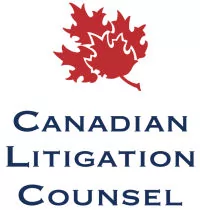In Parks v McAvoy, 2023 ABCA 211, the Alberta Court of Appeal overturned the lower court's decision to summarily dismiss personal claims in negligence against the director of the defendant company related to the construction of a residential house.
Background
In 2010, the Plaintiff hired the defendant company, Woodparke Homes, to construct a residential house. The defendant, Steve McAvoy, was the majority shareholder and sole director of Woodparke.
The house was completed in 2014 but the Plaintiff allegedly later discovered numerous defects in the house including mold and structural issues. The Plaintiff sued Mr. McAvoy and Woodparke (as well as other entities) seeking $6.5 million in damages for negligently constructing the house, breach of contract, breach of fiduciary duty and fraud.
Mr. McAvoy filed a summary judgment application to dismiss all claims against him personally on the basis that he bore no personal liability as he was separate from the Woodparke corporate entity. The Plaintiff also filed an application for summary judgment in his favour but that application was dismissed on the basis that the evidentiary record did not allow for a fair disposition in a summary fashion.
The lower court categorized the claims against Mr. McAvoy into two groups: those related to deficient construction and those related to accounting issues. The lower court dismissed claims related to deficient construction as Mr. McAvoy was not a party to the oral agreement, had no personal liability for the construction of the house, and did not personally owe a fiduciary duty for the construction of a habitable home. The claims related to accounting issues were partly dismissed due to time limitations, but claims of misappropriation and charging for non-existent items were allowed.
The Plaintiff only appealed the dismissal of the personal claims against Mr. McAvoy related to the construction of the house.
Appeal
The Court of Appeal largely concurred with the lower court's reasoning and agreed Mr. McAvoy could not be personally liable for a breach of contract on the basis that all invoices and payments were made between the Plaintiff and Woodparke.
Further, the Court of Appeal agreed Mr. McAvoy did not owe the Plaintiff a fiduciary duty for the construction of a habitable home. It should be noted the claims against Mr. McAvoy related to the misappropriation and charging for non-existent items were not summarily dismissed and those allegations include a breach of a fiduciary duty.
However, the Court of Appeal found the lower court erred when it dismissed the Plaintiff's claims against Mr. McAvoy arising from tort liability in negligence related to the construction of the house.
The Court of Appeal found the lower court failed to distinguish between "liability based on piercing the corporate veil and liability based on a breach of an individual duty owed in tort". This was previously addressed by the Court of Appeal in Driving Force Inc v I Spy-Eagle Eyes Safety Inc, 2022 ABCA 25:
This engages two separate but overlapping concepts. There are some occasions where the law will "lift the corporate veil", and find the directing minds behind the corporation responsible for the liabilities and obligations of the corporation. These situations are, however, an exception to the general rule that there is no personal liability for corporate obligations. The related concept is when the corporation and its human agents are concurrently liable in tort. When an individual is found to be concurrently liable for a tort committed in the name of a corporation, this is not truly an instance of "lifting the corporate veil". The liability of the individual is based on his or her breach of an individual duty owed in tort, not by lifting the corporate veil to impose the corporation's duty or liability on the individual.
Here, the Court of Appeal found the lower court only considered the first concept which was whether to pierce the corporate veil of Woodparke. The lower court did not consider the second concept which was whether Woodparke and Mr. McAvoy were concurrently liable in tort. There are a number of different factors to consider when determining concurrent liability which were previously addressed by the Court of Appeal in Hall v Stewart, 2019 ABCA 98.
The lower court's failure to distinguish between these two related concepts resulted in the negligent construction claims against Mr. McAvoy being reinstated. Further, the Court of Appeal stated:
Finally, we note that the chambers judge did not address Mr. McAvoy's potential liability flowing from cases addressing inherently dangerous work, which would, in part, depend upon findings arising from expert and other testimony provided at trial.
Given the foregoing, we conclude that the chambers judge erred in determining that Mr. McAvoy could not be personally liable for tortious claims related to the construction of the house to the extent the negligence produced a house which was dangerous...
Take-Away
It often occurs that a plaintiff will name the owner of a company personally in addition to the actual company. When this occurs, it is important to consider the two concepts outlined by the Court of Appeal when assessing the personal liability of the individual.
You must consider whether there is merit to piercing the corporate veil or whether the individual is concurrently liable for a tort committed in the name of the company. Some of the factors to consider when assessing concurrent liability which were summarized in Hall v Stewart, 2019 ABCA 98, are outlined below:
- Whether the tortious act was committed while engaged in the business of the corporation, and whether the tort of the employee was contemporaneous with that of the corporation;
- Whether the individual was pursuing any personal interest beyond the corporate interest;
- Whether the director or corporate representative owed a separate and distinct duty of care towards the injured party;
- That the conduct was "in the best interests of the company";
- Whether the plaintiff voluntarily dealt with the limited liability corporation, or had the corporate relationship "imposed" on it; and
- The expectations of the parties, specifically whether it was reasonable for the plaintiff to think that the individuals involved would be personally responsible for any damage that resulted.
* * *
Brownlee LLP is a member of the Canadian Litigation Counsel, a nationwide affiliation of independent law firms .
The content of this article is intended to provide a general guide to the subject matter. Specialist advice should be sought about your specific circumstances.


